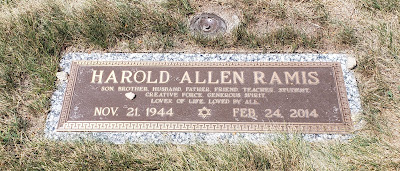Don was also raised with a love of country. During World War 2, he dropped out of high school and enlisted in the Marines. He was assigned to the Pacific Theatre of Operations, where he participated in the historic Battle of Guadalcanal. His military service would be short lived however, as he contracted blackwater fever, a complication of malaria. He spent more than a year recovering at a hospital in New Zealand.
After he left the service, Don married singer Adelaide Adams and began his own career in comedy. In an unusual twist, he took her last name as his own, officially becoming Don Adams. Although the marriage would produce four daughters, the couple eventually divorced. Don would retain the name however, as his career had already been established.
Don's first breaks in television came via his boyhood friend Bill Dana, who had established himself as a comedic writer. Don made eleven appearances on The Steve Allen Show in the late 1950s, where Dana was part of the writing team. In 1963, Dana was given a self-titled sit-com on NBC and he immediately cast Don in the series. You can watch the series intro here. It only lasted for two seasons, freeing Don up for a much more important role
 |
| Don Adams and Barbara Feldon. |
were asked to create a comedic take on the spy genre that had become very popular during the 1960s. At the theatre, audiences paid good money to see the latest James Bond adventure, while watching series such as The Man From UNCLE and The Avengers at home. The result of their efforts was a sit-com
called Get Smart. Watch the iconic series intro here.
The series premiered in 1965 and was an overnight success. It made household names of its three leads, Don, Barbara Feldon and Ed Platt. The series was recognized with multiple Emmy Award nominations, and Don personally took home four for Best Actor in a Comedy Series for his role of Agent 86. He also branched out into directing, helming 13 of the series' 138 episodes. Although it was canceled by NBC in 1969 (the same year they canceled Star Trek!), it was picked up by CBS for one final season.
After the series was canceled, Don, like many others in the business, found himself typecast. Television roles were hard to come by, so he did a lot of commercial work (see the Trivia section below). He also tried his hand at hosting, with the short-lived series Don Adams' Screen Test. You can watch a clip from that series here. It might give you some insight into the inscription you'll later see on his headstone.
Don found the most success doing voice-over work however, and he was a frequent contributor to Saturday morning TV. He was the title character on Tennessee Tuxedo and His Tales, an episode of which you can see here. He also voiced himself on an episode of Scooby Doo. While I can't find the episode itself, here's a podcast that discusses it in way too much detail.
His most famous animated role was that of Inspector Gadget, which he originated in 1983. Here's the catchy intro. Over the next fifteen years, the series had a number of revivals, before Don officially retired from the role in 1999. Ironically, his final acting role was in that year's live-action adaptation of Inspector Gadget, in which he provided the voice of Brain the Dog. Go go gadget career!
Don mostly retired from the spotlight after the film. He led a rather secluded life, which sadly ended on September 25, 2005, when he passed from lymphoma at age 82.
His funeral was well attended and looked more like a celebrity roast. Eulogists included Don Rickles, Bill Dana, Barbara Feldon and James Caan.
He was laid to rest at Hollywood Forever Cemetery. A plaque commemorates his role of Agent 86.
 |
The inscription on the plaque reads:
Beloved husband, father and grandfather. Proudly served his country during WWII in the United States Marine Corps.
Comedian, poet, philosopher, movie buff and never late for post time. A tough but sensitive man with a sentimental heart and a passionate soul.
He touched our hearts as Maxwell Smart, secret agent 86 in the 1960's classic TV series, "Get Smart" and filled the world with laughter that will forever be remembered.
He touched our hearts as Maxwell Smart, secret agent 86 in the 1960's classic TV series, "Get Smart" and filled the world with laughter that will forever be remembered.
Rest in peace, Schmart!
Trivia
- One of Don's high school classmates in New York was Larry Storch, the future star of TV's F-Troop. Years later, both were nominated for Emmy Awards for their respective series. Which one of them took home the trophy? See for yourself in this clip. Incidentally, as of this posting, Larry is 97 years old and still doing autograph conventions.
- Many of the catchphrases made famous by Get Smart, including "Would you believe...," "Missed it by that much" and "Sorry about that, Chief" were brought to the series by Don himself, who had used them with great success in his earlier night club career.
- In the years after Get Smart, Don appeared in a number of commercials, selling a wide variety of products. Click on the links to see some of the more memorable ones: Electronic Detective, Pendulum Pool, Bearcat Scanners, Shifty Checkers, SaveMart. The best of this group however, are the McDonald's ads Don did, appearing with a number of other classic TV stars.
- While Don never published any books, his co-star Barbara Feldon did. In 2003, she released a guide for the single gal called Living Alone and Loving It. Pick up a copy from Amazon.
- Get Smart was originally written for actor Tom Poston, later of Newhart fame. When Adams became available for the role, Poston was shown the door.





























